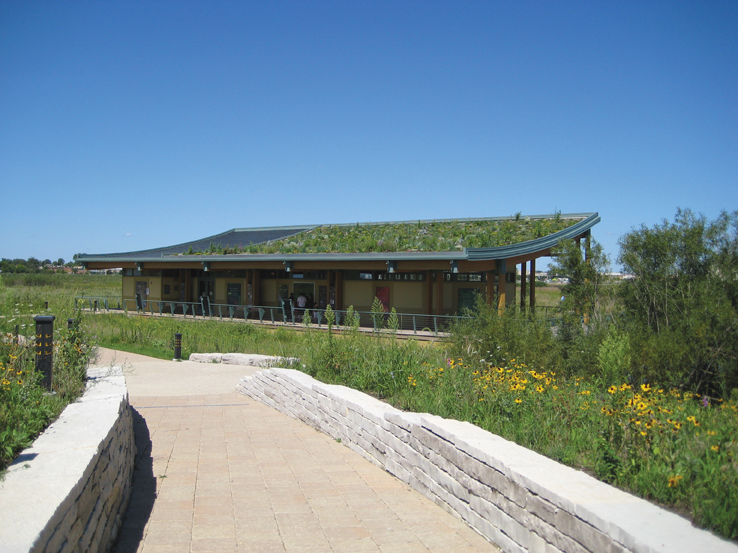Low impact development (LID) refers to a comprehensive land planning and engineering design approach to managing stormwater runoff that emphasizes conservation and the use of on-site natural features to protect water quality. According to the nonprofit Low Impact Development Center, Beltsville, Md., the goal of LID is to “maintain and enhance the pre-development hydrologic regime of urban and developing watersheds while allowing for development or infrastructure rehabilitation.”
After reading this article, you should be able to:
- Understand how low impact development (LID) benefits the health, safety, and welfare of building owners, occupants, and the community.
- Know what to consider to incorporate LID into sustainable design and construction strategies.
- Discuss the “treatment train” and how various “best management practice” options are used to enhance project sustainability.
- List the life cycle cost advantages of LID and evaluate their sustainability advantages in specific projects.
Related Stories
| Oct 5, 2011
GREENBUILD 2011: Kohler builds sustainable booth at Greenbuild 2011
In a setting composed of reclaimed materials, biodegradable signage, energy-efficient lighting and more, exhibitor highlights its new products with ecological awareness.
| Oct 5, 2011
GREENBUILD 2011: Brick offers growing options for sustainable building design
Brick exteriors, interiors and landscaping options can increase sustainability that also helps earn LEED certification.
| Oct 5, 2011
GREENBUILD 2011: Roof hatch designed for energy efficiency
The cover features a specially designed EPDM finger-type gasket that ensures a positive seal with the curb to reduce air permeability and ensure energy performance.
| Oct 4, 2011
GREENBUILD 2011
Click here for the latest news and products from Greenbuild 2011, Oct. 4-7, in Toronto.
| Oct 4, 2011
GREENBUILD 2011: Methods, impacts, and opportunities in the concrete building life cycle
Researchers at the Massachusetts Institute of Technology’s (MIT) Concrete Sustainability Hub conducted a life-cycle assessment (LCA) study to evaluate and improve the environmental impact and study how the “dual use” aspect of concrete.
| Oct 4, 2011
GREENBUILD 2011: Johnsonite features sustainable products
Products include rubber flooring tiles, treads, wall bases, and more.
| Oct 4, 2011
GREENBUILD 2011: Nearly seamless highly insulated glass curtain-wall system introduced
Low insulation value reflects value of entire curtain-wall system.
| Oct 4, 2011
GREENBUILD 2011: Ready-to-use wood primer unveiled
Maintains strong UV protection, clarity even with application of lighter, natural wood tones.
| Oct 4, 2011
GREENBUILD 2011: Two new recycled glass products announced
The two collections offer both larger and smaller particulates.
















